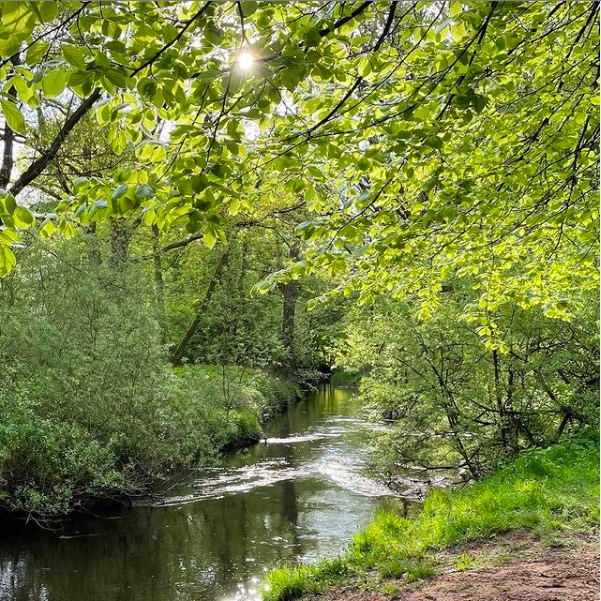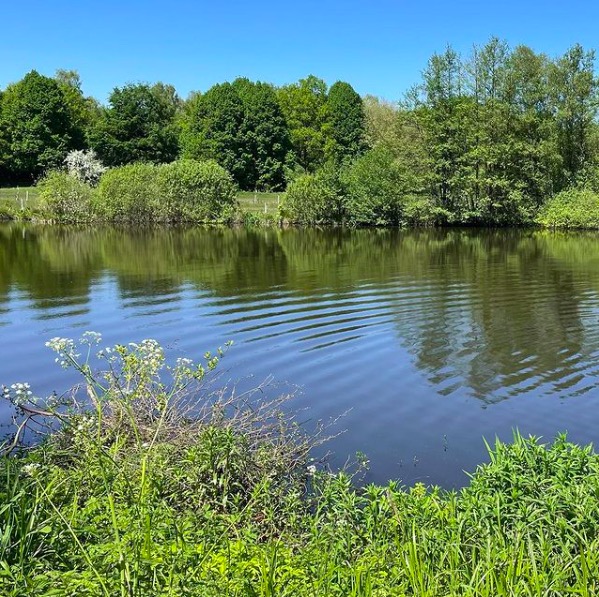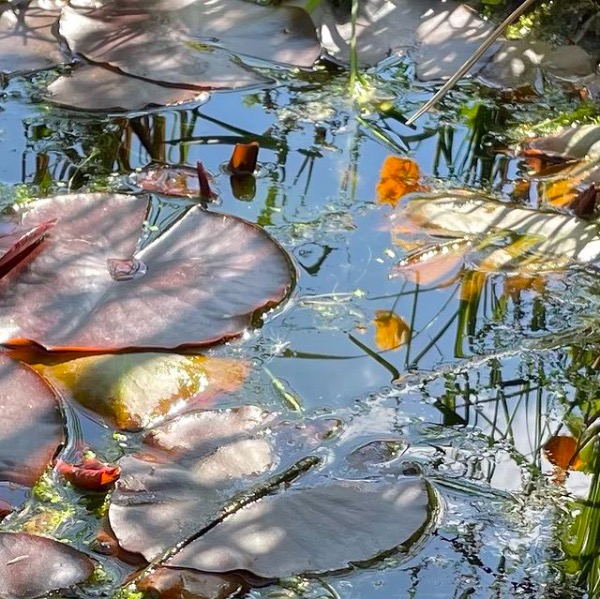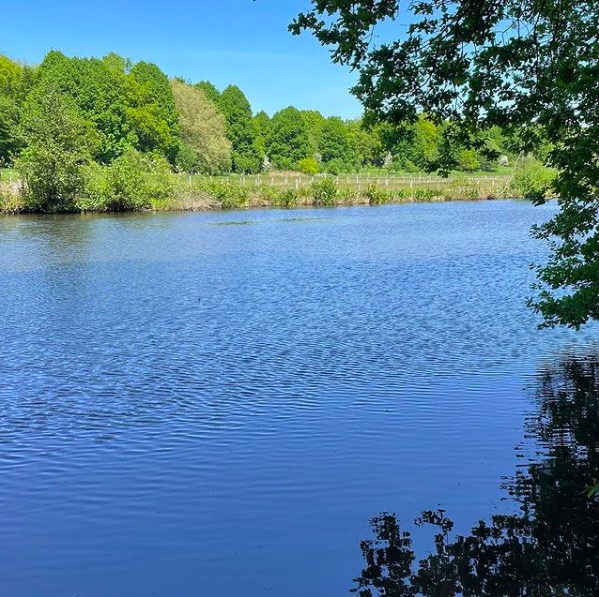
#WaveWatchingWednesday
Here are some recent #WaveWatching pics from my Instagram @fascinocean_kiel. Enjoy! :)

Isn’t it fascinating how some parts of the river reflect the sun and look much brighter, while others are darker, reflecting the trees? From those reflections we can see what the water surface must be like: fairly flat in the darker parts, with waves, i.e. sloping parts, in the bright Vs. In this case, it’s a coincidence that we see Vs: for wakes, we would have a ship or an animal at the V’s tip, and the V being the outer edge of a wake. In this case, there are obstacles on either side of the river, each disturbing the flow and forming a backwater wedge downstream. And then at some point, those wedges from either side of the river meet in the middle, forming the V.
The dark area inside the V is the area where where water is flowing fairly rapidly in the river. On the V, where we see the waves and thus rhe different reflection, the flow changes and becomes turbulent under the influence of the backwater wedges. It calms down again, the surface gets flatter, i.e. darker, and the rinse & repeat for the next V!

Nice waves from a dog jumping into the lake! The owner was very confused why I whipped out my phone when the dog jumped in, but then didn’t point it at the dog

Pretty garden pond! Would you have guessed that its surface area is less than 1m2?

Can you see where the surface area is exposed to the wind and the roughness is therefore high, and where it is sheltered and there are waves propagating in from the higher-wind areas, but no new waves being generated?